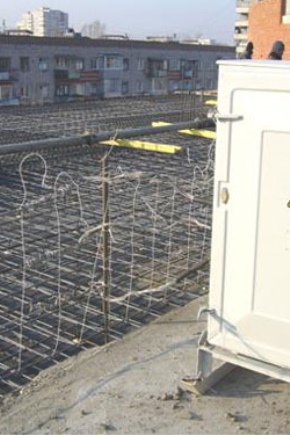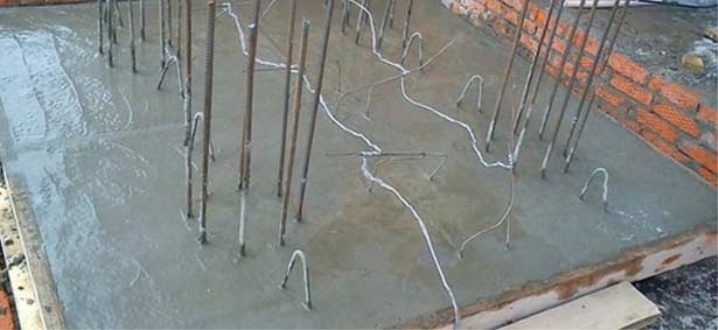Concrete heating

Heating of concrete is used for concreting of those structures, the construction of which is supposed to be carried out when the temperature is below +5 degrees Celsius.
The main goal is to prevent the newly laid material from freezing around the reinforcement. It is also very important to prevent the appearance of ice films.
There are two main ways that are most often used to carry out concrete heating. It:
- Heating loop PNSV;
- Electrode loops.
Electrode method
This method consists in the fact that heat in the concrete is released due to the direct passage of electric current through it. In fact, this method is fully consistent with the principle of the army boiler. Most often, this technique is used when you need to heat the walls.In some cases, also suitable for floors, when there is no possibility to use a heating loop. In addition, it can be used before pouring concrete into the formwork.
Benefits
- The mixture heats up quickly;
- Easy to install and reliable.
disadvantages
- Because of the high current, it requires that large electrical power could be provided on site.
- When the concrete dries, the heating stops. To resume you need to increase the voltage.
Heating loops
Most often used for floors and much less for walls. This is due to the fact that in order to heat the walls, it is necessary to significantly reduce energy consumption.
The process of powering the electrodes and loops (i.e. heating elements) is carried out by using a step-down transformer. It has several stages of undervoltage, which allow you to monitor the heat output and regulate it depending on how the outside air changes.
Benefits
- The temperature is maintained regardless of whether the concrete is dry or not.
- Reduced power consumption when compared with the electrode method.
disadvantages
- There may be difficulties in the calculations and installation.
- There is a possibility of damage to the insulation.
other methods
There are also other ways:
- Induction.
- Infrared.
- Heating with heating formwork.
They are rarely used.





















